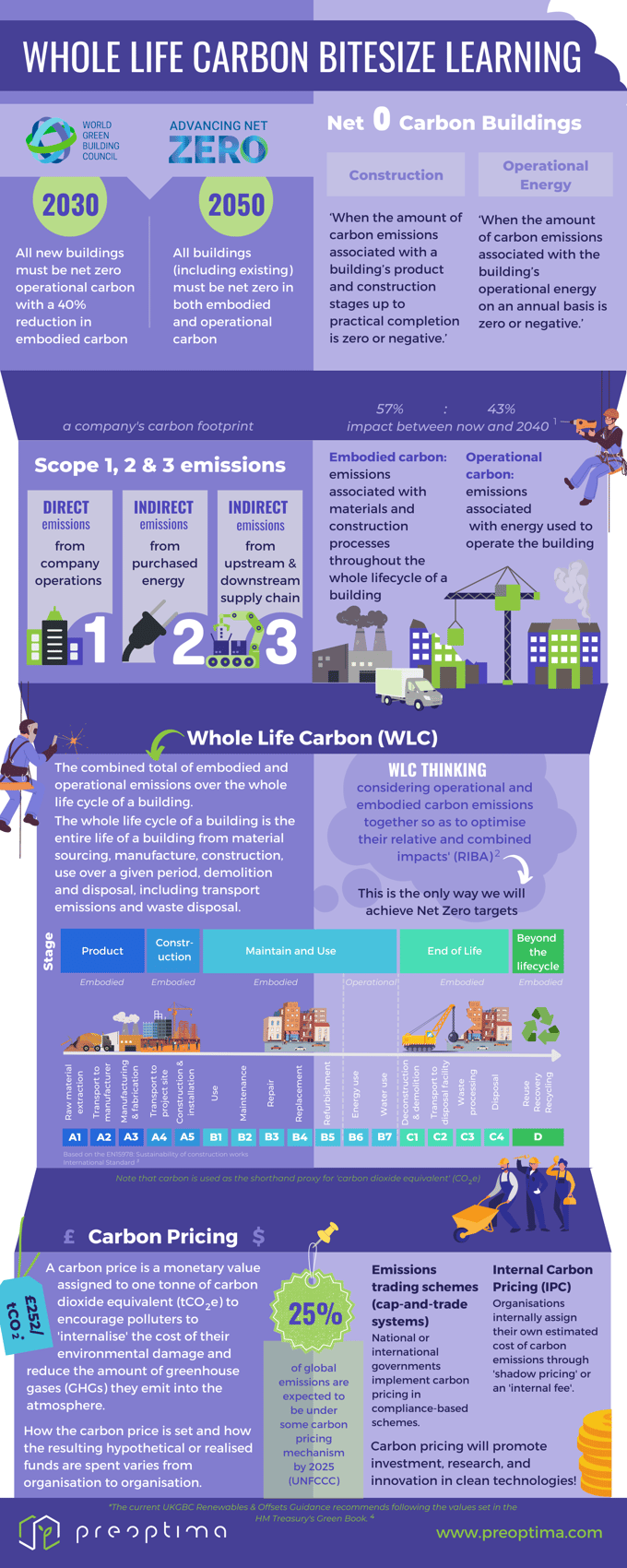Covering Embodied Carbon Series
The Whole Life Carbon Digest
Read Time 3 mins | Written by: Alex Bantock
"Sustainable"...
A word that first raised its head in the context of forestry and natural resource management in the 18th and 19th centuries1,2, where the term "nachhaltige Bewirtschaftung" (sustainable management) was used to describe a system of forestry that would allow for the continued use of forests over time. Since then, a growing awareness of and concern about environmental issues has seen a significant increase in its use3, making 'sustainability' a mainstay topic in almost every professional conversation.
But remember, however 'normalised' it has become, sustainability is still an incredibly complex and multifaceted topic with a whole lot of nested subjects, systems and jargon that often make it difficult to digest.
But getting to know sustainability well is something that almost all professionals across all sectors have to do, and the easier we make it, the more we'll see knowledge and confidence growth in sustainability concepts and action.
We created the Whole Life Carbon Bitesize Learning infographic* to give built environment stakeholders a quick-and-easy lesson on 5 key concepts that are critical to understanding sustainability in buildings:
1. Net Zero Carbon Buildings
2. Scope 1, 2 and 3 Emissions
3. Embodied vs. Operational Emissions
4. Whole Life Carbon
5. Carbon Pricing

We hope that this is not only a helpful high-level introduction to some key sustainability concepts, but that it also inspires others to dig deeper and learn more about these important topics.
The rate of our sustainable transition is making skilled professionals in the space all the more rare, so ensure that you upskill yourself as much as possible to become a key sustainability driver in your organisation, community and life!
* The infographic is based on the UK Green Building Council's (UKGBC) Bitesize Learning Guides - "a suite of resources that demystify key carbon concepts and create a common language for non-technical experts to confidently get involved in sustainable building topics". See more on their website.
References:
In-text references:
-
The concept of sustainable development: its origins and ambivalence - Carl Mitcham (1995)
-
For a livable climate: Net-zero commitments must be backed by credible action - United Nations
Infographic references:
1. Why the built environment? - Architecture 2030
2. Embodied and whole life carbon assessment for architects - RIBA
We'd love to hear from you!
